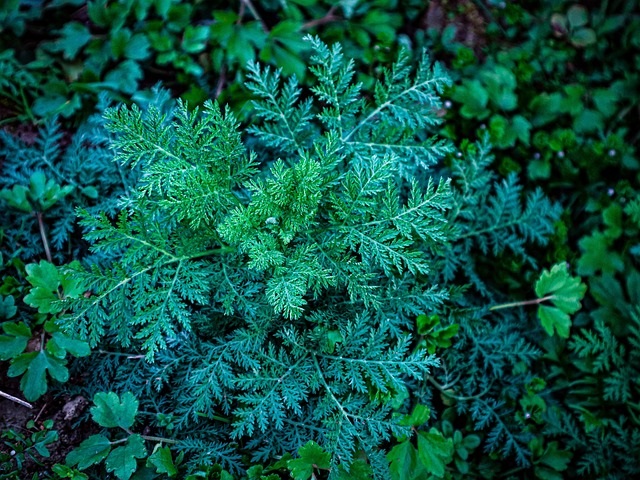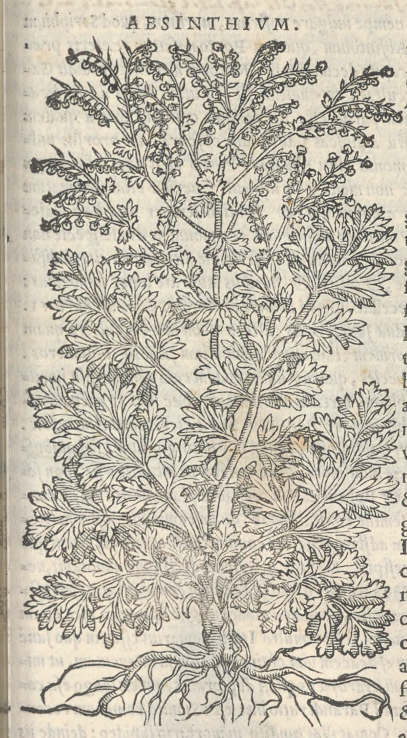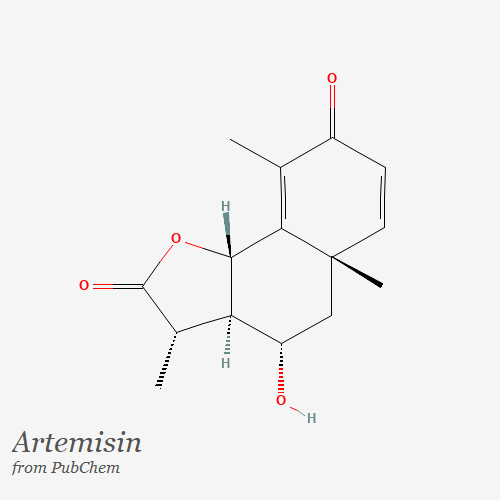Artemisia is a genus of plants that contains several different species, and each species may have its own active ingredients and mechanisms of action. Wormwood (Artemisia absinthium) is a perennial plant that has been used for centuries for its medicinal properties. It is native to Europe, but has been naturalized in many parts of the world. Wormwood was first mentioned in ancient Greek texts and has been used by herbalists and healers in many cultures for its digestive, anti-inflammatory, and antipyretic properties. In this blog post, we will explore the traditional uses of wormwood, the scientific research on its medicinal properties, and its current use in modern medicine.

Traditional Uses of Wormwood
Wormwood has a long history of use in traditional medicine. In ancient Greece, it was used to treat digestive problems, fever, and other ailments. Dioscorides called wormwood “apsinthion” (ἀψίνθιον) in his pharmacological compendium, De Materia Medica. This is the same name by which the plant is commonly known today in many languages, including English. The name “apsinthion” probably derives from the Greek word “apsinthos”, which means “undrinkable” or “bitter”. This is a reference to the extremely bitter taste of the plant, which we now know is due to its high concentration of bitter-tasting compounds called sesquiterpene lactones. as a treatment for a variety of ailments. Dioscorides recommended it as a digestive aid, a remedy for fever, and a treatment for menstrual cramps, among other uses. Wormwood continued to be used in European medicine throughout the Middle Ages and Renaissance.

Wormwood is not traditionally used in Chinese medicine. However, there are several other species of Artemisia, including Artemisia annua and Artemisia argyi, that have been used in traditional Chinese medicine for various purposes. Artemisia annua, also known as sweet wormwood or qing hao, has been used in Chinese medicine for over 2,000 years to treat fever and other ailments. Artemisia argyi, also known as Chinese mugwort or ai ye, has been used in Chinese medicine for over 2,000 years to treat a variety of conditions, including digestive disorders, menstrual cramps, and arthritis. Its leaves are often used in moxibustion, a traditional Chinese therapy in which dried mugwort is burned on or near the skin to stimulate acupuncture points and improve circulation. Both Artemisia annua and Artemisia argyi are still widely used in Chinese medicine today, and their therapeutic properties have been the subject of extensive scientific research.
Wormwood is not traditionally used in Indian medicine (Ayurveda), but there are several other species of Artemisia that have been used in Ayurvedic medicine for various purposes. Artemisia vulgaris, also known as mugwort or nagadamani, has been used in Ayurvedic medicine for centuries as a digestive aid, a treatment for respiratory problems, and a remedy for menstrual cramps. Its leaves and roots are often used in traditional formulations such as teas, tinctures, and compresses. Artemisia indica, also known as davana, is used in Ayurvedic medicine for its anti-inflammatory, analgesic, and antipyretic properties. Its essential oil is used in aromatherapy to treat anxiety, depression, and insomnia.
Wormwood has also been used as a flavoring agent in alcoholic beverages, most notably absinthe. Absinthe was popular in France and other parts of Europe in the 19th century, but was banned in many countries due to concerns about its psychoactive effects. The active ingredients in absinthe, including thujone, were believed to cause hallucinations and other adverse effects.
Scientific Research on Wormwood
In recent years, there has been growing interest in the medicinal properties of wormwood, particularly its potential as a treatment for malaria. One of the active compounds in wormwood, artemisinin, has been shown to have potent antimalarial activity. Artemisinin is now widely used in combination with other drugs as a first-line treatment for malaria. Artemisinin is believed to work by targeting the Plasmodium parasite that causes malaria and disrupting its ability to reproduce and spread in the body. Specifically, artemisinin appears to react with the iron in the parasite’s heme groups to form free radical intermediates or reactive oxygen species (ROS), which then kill the parasite by alkylating and poisoning one or more essential malaria proteins or DNA.

In addition to its antimalarial properties, wormwood has also been shown to have anti-inflammatory, antibacterial, and antifungal properties. It has been used in traditional medicine to treat inflammatory conditions such as arthritis and gout, and to reduce fever and pain. Wormwood has also been shown to have anticancer properties by inducing apoptosis (programmed cell death) in cancer cells and by inhibiting angiogenesis (the formation of new blood vessels that tumors need to grow).
Some of the potential therapeutic uses of wormwood that have been studied in clinical trials include its effects on digestive disorders such as dyspepsia and irritable bowel syndrome (IBS). One study found that artemisinin was able to reduce inflammation and improve symptoms in mice with colitis, a type of inflammatory bowel disease (IBD). The study suggested that artemisinin may work by inhibiting the production of inflammatory cytokines, which are proteins that play a key role in the development of IBD. Another study found that artemisinin was able to reduce inflammation and oxidative stress in rats with colitis. The study suggested that artemisinin may work by regulating the activity of certain enzymes involved in the production of reactive oxygen species (ROS), which may contribute to inflammation and tissue damage in IBD.
Recently, it has been proposed that artemisinins may be useful in the treatment of COVID-19. Indeed, in vitro studies have shown that extracts of Artemisia annua are effective against SARS-CoV-2 and its variants. In a small clinical trial, an artemisinin-based preparation was found to improve clinical symptoms in 91% of patients with COVID-19 and to reduce the duration of abnormal oxygen saturation, oxygen supplementation, and fever. No treatment-emergent adverse events were reported.
Current Uses of Wormwood and Conclusions
Wormwood is a plant with a long history of use in traditional medicine and is now being studied for its potential as a treatment for malaria and other diseases. While scientific research on wormwood is still in its early stages, there is growing evidence that it may have a number of health benefits. Wormwood is still used in traditional medicine in many parts of the world, especially in Europe and Asia. It is also used in some modern medical treatments, particularly for malaria. Artemisinin, the active ingredient in wormwood, is generally considered safe when used in combination with other antimalarial drugs.